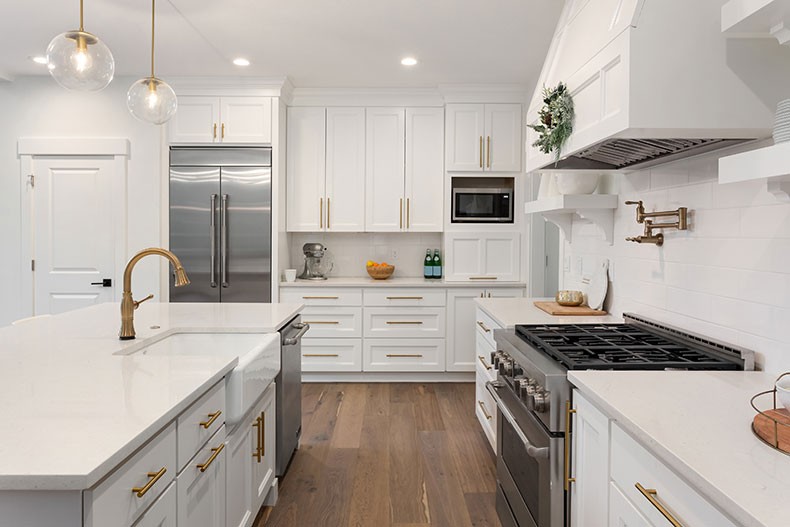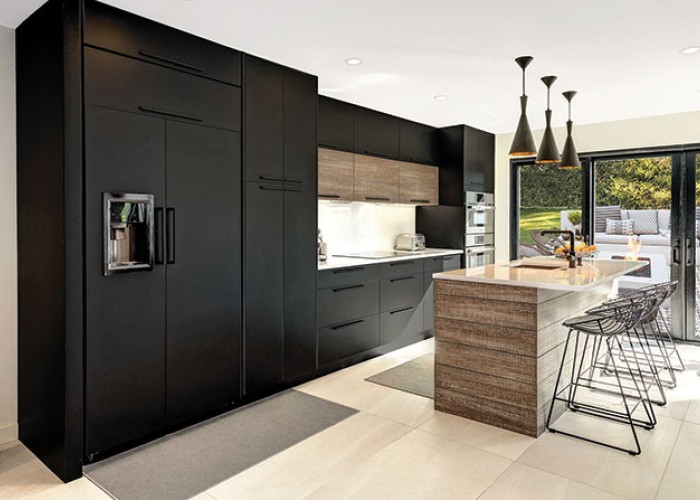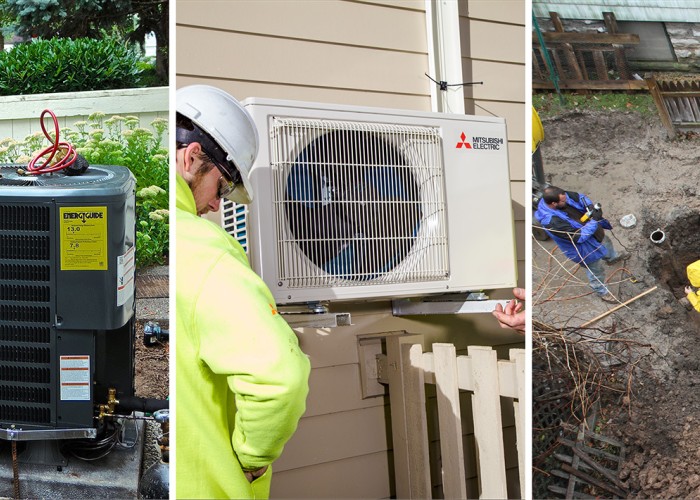Happier Cooking with Kitchen Ventilation
Say goodbye to smoke and smells
By Jonathan Susser
Q: I am getting tired of the heat and odors that build up in my kitchen. How can I keep the smells, smoke, and steam from sitting there while I cook?
A: Good news: Your home likely already has an appliance for just that purpose. Unfortunately, people often don’t know much about it or how to use it. I’m talking about the range hood and its cousins. Like it sounds, a range hood is more or less a hood that sits over your range or cooktop. It’s usually metal, and comes in many shapes, sizes and styles. Basically, a range hood just sucks up the odor, grease and moisture particles from your cooking and dumps them elsewhere.
In the best-case scenario for all kitchens, that “elsewhere” is outside, thanks to ductwork through your roof or an exterior wall. Venting to the outside is particularly important for homes that use liquid fuel as a cooking source, since you don’t want carbon monoxide or combustion byproducts lingering around to ruin your appetite, or worse. (Now that it’s on your mind, it’s probably a good idea to check the batteries in your carbon monoxide alarm.)
A slightly less beneficial ventilation option is a range hood that is not ducted but rather recirculating. In this setup, the hood sucks up all that air, filters it for grease and particulates — and sometimes chemicals if a charcoal filter is present — and then exhausts air back into your kitchen. This is not as good as ejecting contaminants away from your home, but it still helps with air quality, smoke and odors when used.
Instead of a hood above your range, you may have a microwave, like I do, that has an exhaust fan built in. The bottom of the microwave is the intake that draws in the air, and again, it can either move that air through ductwork to the outside or, more likely, recirculate it back into the kitchen through the top of the equipment, at about forehead level.
Another ventilation tool is a downdraft exhaust fan. Downdrafts typically come up next to your range or cooktop when operated and can be convenient if you don’t have a ceiling nearby for a range hood. Fighting physics, downdrafts suck the pollutants down and out of your kitchen. However, for this reason they are often very powerful — don’t let your cat get too close — and can even backdraft your chimney (which can be harmful for air quality, health and safety) if makeup air is not provided from a better location.
No matter what kind of kitchen ventilation you have, it would benefit from occasional maintenance to keep it running well. For example, it likely has a metal filter that can get gooey from the grease and moisture byproducts it traps. This filter should be cleaned or replaced if you notice that it’s getting dirty.
If you’re looking to upgrade your current setup (ventilation can be a great part of any kitchen remodel), be sure to do your research, ask friends or neighbors for recommendations, and get quotes from a few contractors if you go that route.
If you’re hoping to vent to the outside, you have a few options. Getting a ducted range hood is the most common, but it’s also the most involved if the parts aren’t in place already. Another possibility is to just have an exhaust fan installed on a wall or ceiling close to your stove, a similar idea to a bathroom exhaust fan.
So there you have it. Feel free to use kitchen ventilation whenever someone in your household is whipping up a meal. It’ll keep you from needing to pinch your nose, help cool things off and limit condensation, mold and mildew, providing a much more pleasant cooking experience.
-
Home updates you need
-
Share this story:





Comments (2)
Joe Hennessey |
October 28, 2021 |
reply
Jonathan Coulter, senior consultant with Advanced Energy
Advanced Energy |
November 02, 2021 |
reply